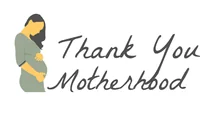Planning everything down to the last millimeter is just one of many things that comes naturally to people when they are about to become parents. So if you are losing sleep over small details like how many baby bottles you should get, you are definitely not alone.
To answer your question, I believe 3-4 small bottles (4-8 oz) bottles will be enough if you are going to breastfeed as well. Eventually, when you switch to exclusive bottle-feeding, buying them in packs of 8 or 10 would be a good start. Why that many?
That’s because baby bottles require frequent replacement for hygiene reasons. However, don’t buy like 50 of them because you may need to change your bottles as your baby grows.
Still confuse or worried about bottle and breastfeeding in tandem? Fret not.
Below I’ve addressed some of the most common queries new parents have related to introducing bottle-feeding alongside breastfeeding to their baby.
When Is the Right Time to Introduce Bottle While Breastfeeding?
Ideally, you should start introducing bottle from as early as 3rd to 4th week or until you’ve established a good milk supply. If you are nervous about bottle-feeding way too early, wait till the 6th week. But realistically, the longer you wait, the higher is the chance of your baby refusing to take bottle.
Now, if you have to next back to worth or have a medical emergency coming up in a month from now, don’t wait until the last week to introduce bottle. Staring a couple of weeks earlier will make the switch easier for both the caregiver and the baby.
How Much Milk and How Often?
According to this research, 1 to 6-month-olds may consume anywhere between 50-230 ml of milk. A good starting point would be 60 ml and work your way from there. You should use your baby’s hunger and body language as a cue.
Do not, under any circumstances, force your baby into drinking more milk than they want to. How to know if the baby is satiated? The suckling will slow down and your junior will begin to fall asleep.
About the frequency, limit the bottle-feeding to 3-4 times a week tops. Do it more often and your baby might refuse to breastfeed. If you notice
What about Nipple Confusion and What Can You Do About It?
Once your junior gets used to bottle-feeding, he may make angry mini-hulk noises when switching to breastfeeding. This condition is known as Nipple Confusion and is more common than you think. It primarily happens because latching onto a nipple and sucking from a bottle is easier than breastfeeding for a baby.
It’s nothing to get all wound up about, though. Here are a few ways to counter this problem, as suggested by my lactation expert:
Get a Slow-flow Nipple
It’s imperative that you always start with a slow-flow nipple to keep gravity from controlling the milk flow. Standard bottles may have fast-flow nipples which makes suckling easier for babies. Feeding too fast can put an unnecessary amount of pressure on the delicate, developing GI tract of babies younger than 6 months. At worst, it can lead to serious choking risk.
A slow flow nipple will emulate the natural flow rate of human breast, making botttle-feeding much safer and more effective for babies. While we are on the topic, if your baby is grunting while breastfeeding, it’s likely for the very same reason – suckling too fast.
The reason, in this case, would be oversupply of milk. You can check more on that here.
Don’t Rush, Slow Touch
Even if you are using a slow flow nipple, be mindful of your feeding technique. Let your baby dictate the pace, allow as many pauses as she needs. If everything is in order, the feeding should take about 15-20 minutes.
If the feeding is over in 5-10 minutes, the flow is too fast. If it’s taking 30-50 minutes, I’d strongly recommend switching to a medium or fast flow nipple (recommended only for babies over 6 months). While feeding, don’t forget to switch sides a couple of times, pause for burps, and soothe the baby.
Some More Helpful Tips to Make Constant Bottle or Breast Transitions Smooth (like Butter)
- Feed the baby in a semi-upright position and hold the bottle horizontally to slow down the flow rate. This could prevent colic issues and mimic the natural nursing rhythm.
- Never heat expressed breastmilk on a stovetop or in a microwave. If the milk is fresh out of the fridge, bring it to 98.6°F (the average human body temperature) by letting the bottle or bag sit in hot water for some time. Alternatively, you can also hold it under a running hot water tap. However, some babies do like cold milk and it’s perfectly safe.
- Dip the bottle nipple in some milk first before offering it to the baby. The smell of breastmilk will encourage the baby to latch on quickly.
In Conclusion
Hope this guide has cleared all the doubt you had in your mind. To sum up, introducing bottle as early as possible and letting babies go at their own pace always helps. If your baby is still blatantly refusing bottle, it would be wise to consult a lactation expert.

